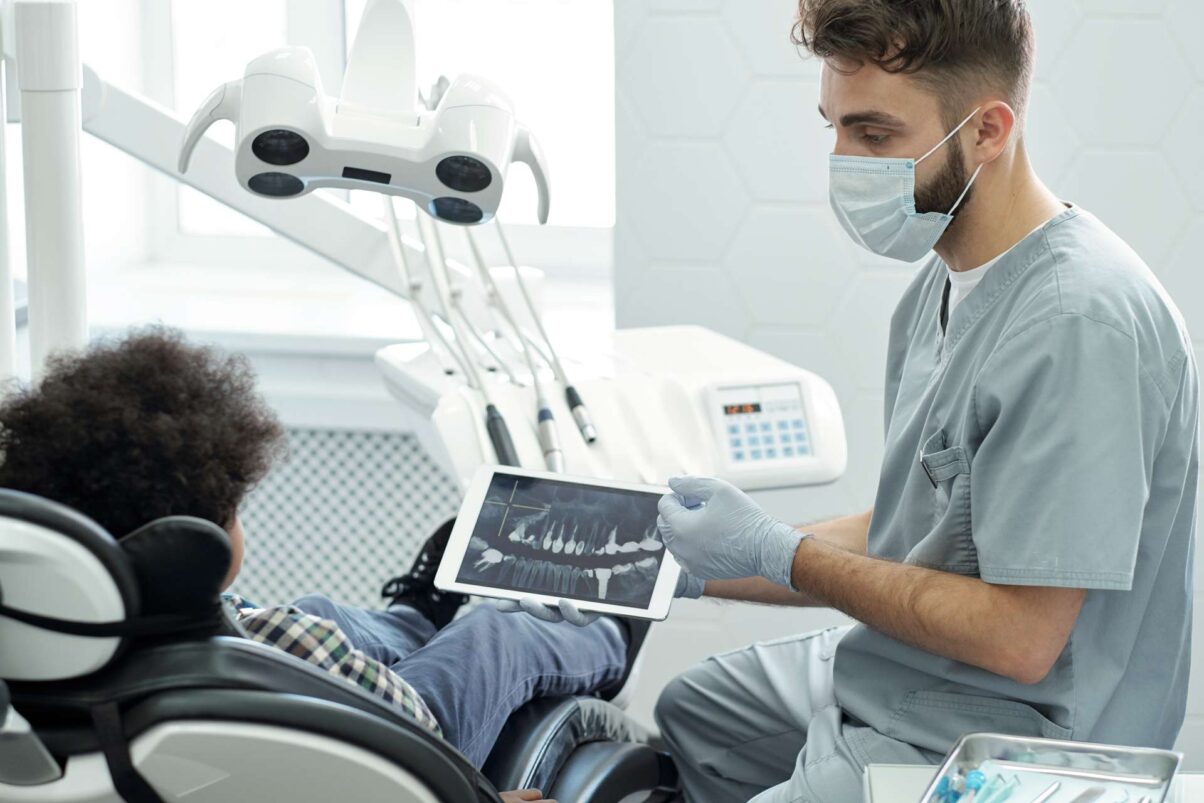Technology: Taking the Pain Out of Dental Procedures
Technology has come a long way in the field of dentistry, and it has revolutionized the way dental procedures are performed. Gone are the days when a visit to the dentist meant fear and discomfort. In this blog, we will explore some of the latest technological advances in dentistry and how they work to take the pain out of dental procedures. From dental imaging and 3D printing to lasers and a better anesthesia delivery system, these innovations are transforming the practice of dentistry and improving overall patient experience. Whether you are in need of a routine cleaning or a more complex procedure, you can rest assured that with the help of technology, your dental visit will be as stress-free as possible.
Here are a few examples of the new technologies taking the pain out of dental procedures.
What is Laser Dentistry?
Laser dentistry uses lasers to perform a variety of procedures. Lasers have been shown to be effective in reducing pain and discomfort during dental procedures, as they can be used to precisely remove or reshape tissue without causing the heat, vibration, or pressure associated with traditional dental instruments.
Lasers can be used to remove decay from teeth, reshape gum tissue, and remove bacteria from periodontal pockets. They can also be used to prepare teeth for fillings, perform gum surgery, and whiten teeth.
Overall, this dental technology can provide a more comfortable and less painful experience for patients, as it often requires less anesthesia and results in less swelling, bleeding, and post-procedure discomfort. It is important to note, however, that not all dental procedures can be performed with lasers. Some procedures may still require traditional methods. It is always best to discuss the available treatment options with your dentist to determine the most appropriate and effective course for your specific needs.
The Latest in Dental Imaging
Dental imaging refers to the use of various technologies to create visual representations of the teeth, mouth, and surrounding structures. These images can be used to diagnose and treat dental conditions, and they can help dentists and oral surgeons plan and execute treatment more accurately and effectively.
Dental imaging has reduced pain in dentistry by allowing dentists to precisely diagnose and treat problems. For example, dental imaging can be used to identify problems such as cavities, abscesses, or impacted teeth, all of which can cause pain if left untreated. By using dental imaging to identify these problems early on, dentists can provide treatment before the condition becomes more severe and painful.
Another way in which dental imaging has reduced pain in dentistry is that it helps dentists plan and execute treatment more accurately. For example, if a dentist is planning to extract a tooth, they can use dental imaging to get a detailed view of the tooth and surrounding structures. This can help them determine the best approach for extracting the tooth, which can minimize the amount of pain and discomfort experienced by the patient.
Overall, dental technology has played a significant role in reducing pain in dentistry by allowing dentists to diagnose and treat problems more accurately and effectively. It has also made it possible for dentists to plan and execute treatment in a way that minimizes pain and discomfort for the patient.
Better Anesthesia Delivery Systems
Anesthesia delivery systems are designed to administer anesthetics, or medications that are used to numb or block sensation in a specific area of the body. In dentistry, these systems are used to help manage pain and discomfort during procedures.
There have been many advances in anesthesia delivery systems in recent years, making it possible to deliver anesthetics with greater control. These advances help to reduce pain and discomfort during dental procedures.
One example of an advance in anesthesia delivery systems is the development of computer-controlled delivery systems. These systems allow dentists to precisely control the amount and rate of anesthetic delivery, which can help to minimize the risk of overdose or underdose. This creates a more comfortable and effective anesthetic experience for the patient.
Other advances in anesthesia delivery systems include the development of new anesthetic agents that are more effective and have fewer side effects, and the use of topical anesthetics, which can be applied directly to the area being treated to numb the tissue without the need for injections.
Overall, the use of better anesthesia delivery systems has helped to take the pain out of dentistry by providing more effective pain management during procedures. This has made it possible for dentists to perform a wider range of procedures with greater comfort for the patient.
Advancements are the Key to a Pain-Free Dental Visit!
Dental technology has played a significant role in reducing pain and discomfort during dental procedures. Advances in laser dentistry, dental imaging, and anesthesia delivery systems have all contributed to a more comfortable and effective dental experience for patients. By using these technologies, dentists are able to diagnose and treat problems more accurately, plan and execute treatment with greater precision, and manage pain more effectively. As a result, patients are able to undergo dental procedures with less anxiety and discomfort. Overall, technology has been an important factor in taking the pain out of dental procedures and improving the quality of care in dentistry.
